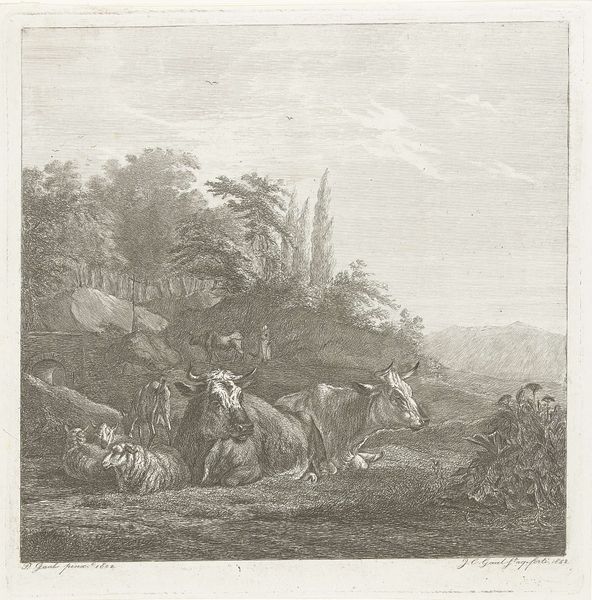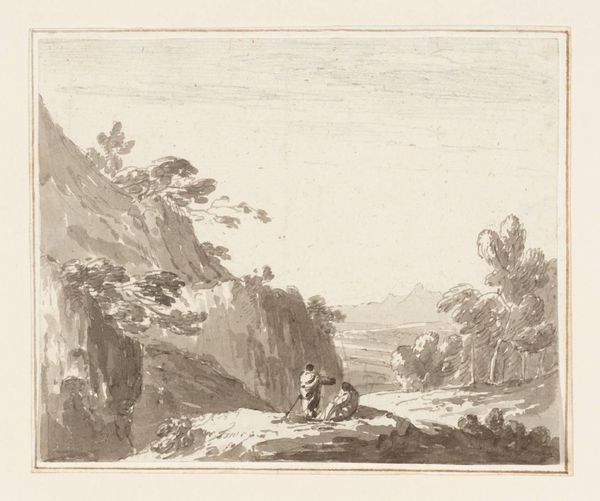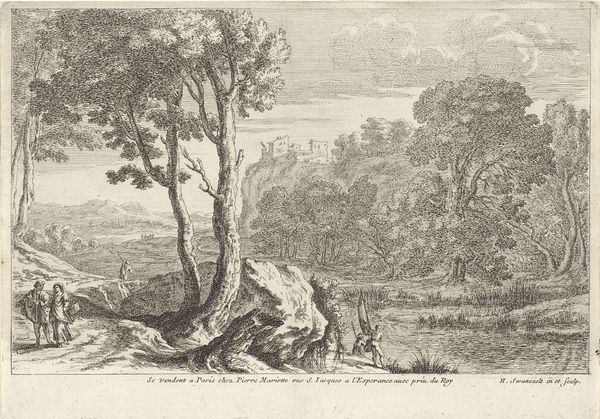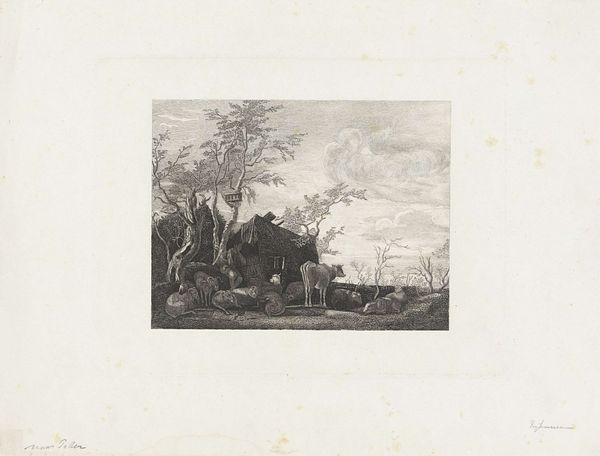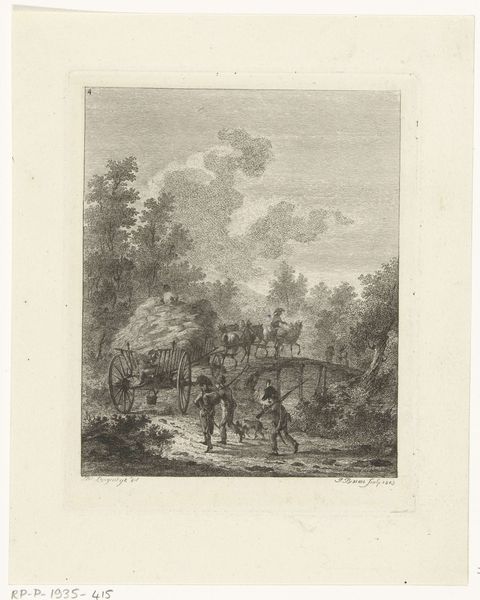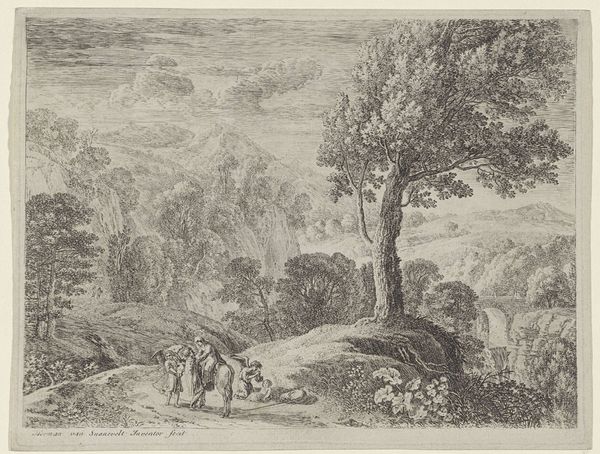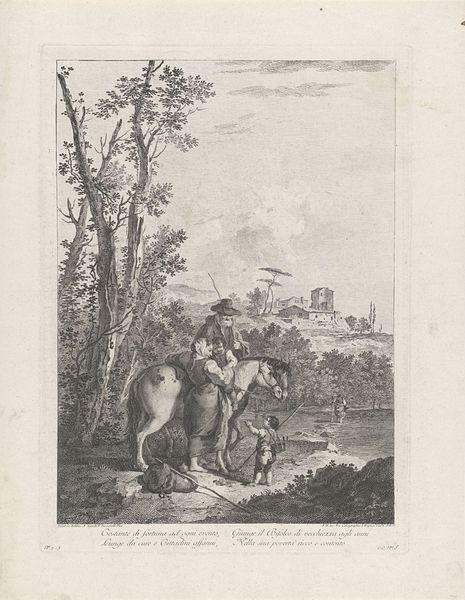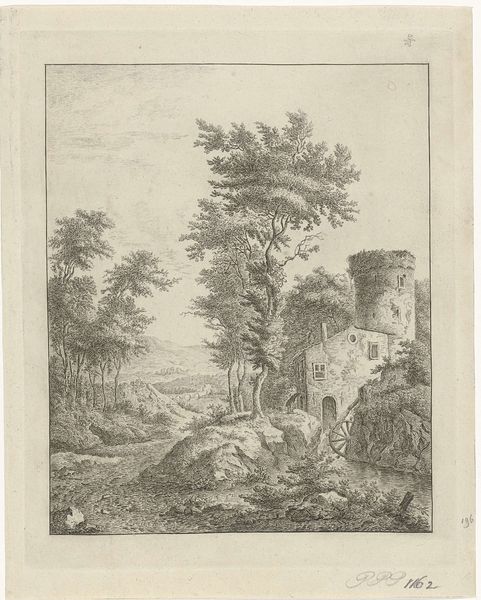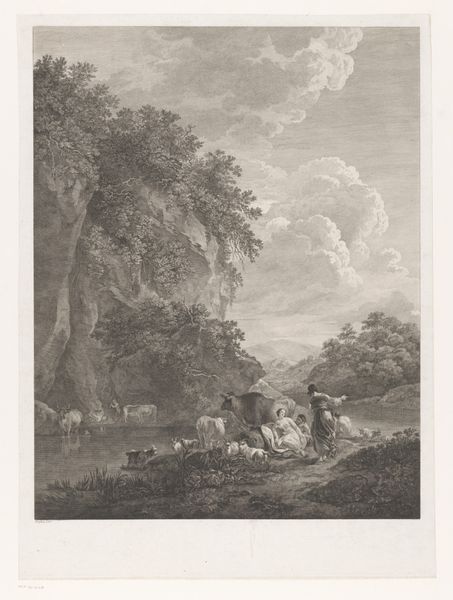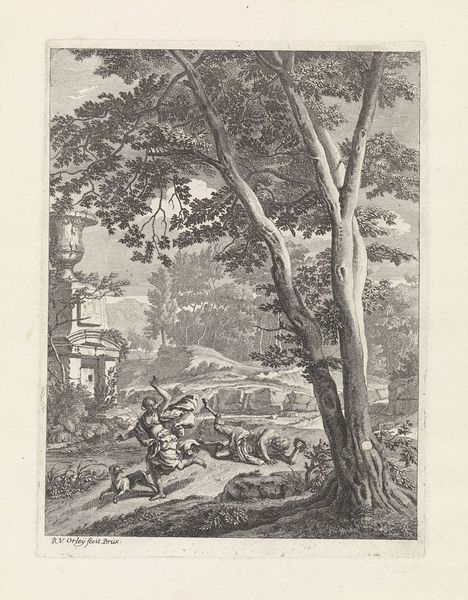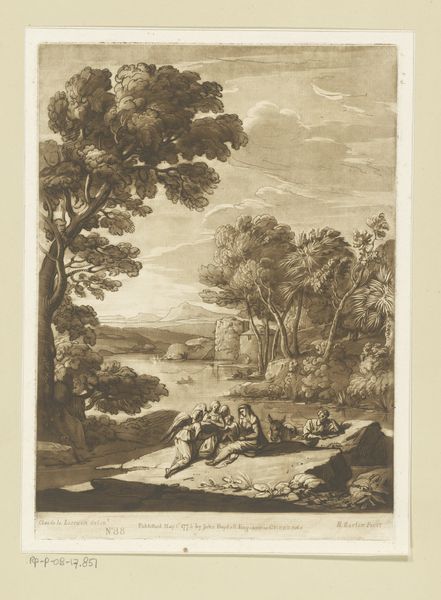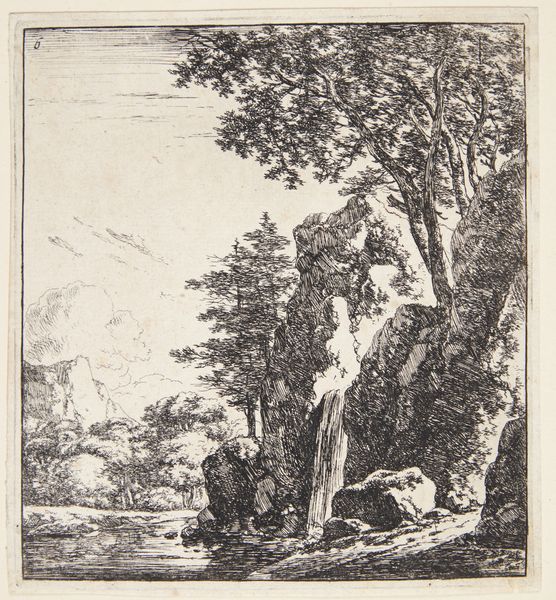
drawing, etching
#
pencil drawn
#
drawing
#
etching
#
old engraving style
#
landscape
#
genre-painting
#
realism
Dimensions: height 225 mm, width 200 mm
Copyright: Rijks Museum: Open Domain
Curator: What strikes me immediately about this etching, Jacobus Cornelis Gaal’s "Two Cows and Three Lying Sheep by a Bridge" from 1852, is its pastoral calm. There's a serene quality, a quiet dignity in the representation of these animals. Editor: Yes, it evokes a certain mood, but my attention is drawn to the method. Look at the marks that make up the cows! The labor required to create that texture, that mass of each beast using simple etching techniques, fascinates me. You see the artist thinking through process. Curator: Absolutely, and considering its historical context—mid-19th century—it invites contemplation on the roles animals played within Dutch society, touching upon agricultural labor, land ownership, and human-animal relationships within burgeoning capitalist systems. This work acts almost as a pre-photographic record. Editor: That makes me consider the means by which this rural life was recorded, and for whom? Was it commissioned, or was Gaal making this for himself to demonstrate skill, or perhaps to circulate and sell as prints? The material life of this image is what matters. Curator: Those questions are crucial! If we understand Gaal's relationship to these animals, can we gain insights into broader cultural hierarchies of that time? Do these domestic animals, rendered with such care, perhaps speak to themes of power, dependence, and the natural world? This image, in all its seeming simplicity, hints at societal attitudes regarding nature and control. Editor: Perhaps! Though it could also be read as a celebration of agriculture. It could serve the material purpose of communicating pride and wealth if sold to landowners. Either way, consider the etcher’s careful application of acid and ink to render the animals’ weight against the delicate background, highlighting the skills required of manual production. It would sell based on such considerations! Curator: And what narratives were these landowners trying to project? These aren't just representations of livestock; they may embody a nostalgic yearning for an idealized agrarian past—a sort of push-back against increasing industrialisation. Editor: Indeed, the narrative extends beyond art, touching on commerce and cultural identity. Seeing the animals sprawled leisurely is also suggestive—of fatness, well-being, food sources. What were they fed? It hints at local food and land economies. Curator: Fascinating how this modest drawing reveals such rich interplay of historical forces. Editor: Precisely, and through interrogating how it was made, we glimpse this interplay of production and meaning.
Comments
No comments
Be the first to comment and join the conversation on the ultimate creative platform.
